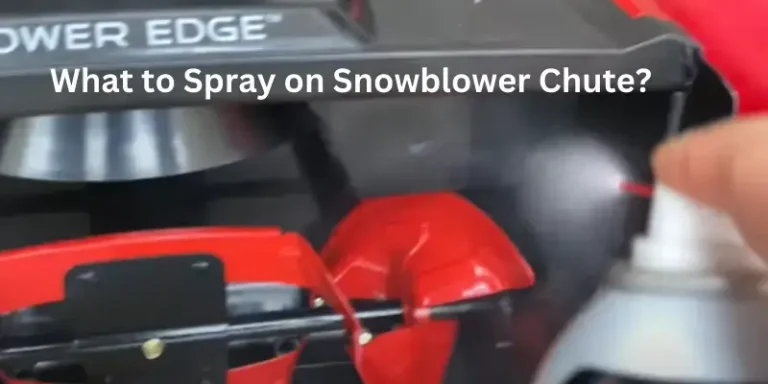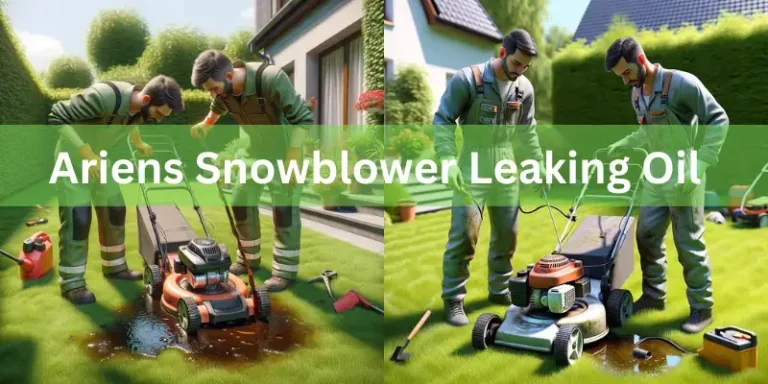How to Clean a Snowblower Carburetor?
Is your snowblower leaving you frustrated instead of clearing snow? It could be because the carburetor, which is like the stomach of your machine, is all clogged up with dirt and old fuel. But don’t worry! This guide will show you how to clean it step by step, so your snowblower can work like new again. You don’t need any special tools or expertise, just be ready to get your hands dirty (and maybe wear gloves!). So, grab your tools, get ready to fix your snowblower, and say goodbye to winter troubles! Keep reading…!
What is a Carburetor in your Snowblower?
A carburetor in your snowblower is like a small blender, bringing together two important ingredients: air and gasoline. The carburetor mixes these two elements in just the right amounts to create what’s called a “fuel mixture” that the engine needs.
The engine needs air to burn the gasoline. Gasoline is what fuels the engine, giving it the power to throw snow. The carburetor carefully blends the air and gasoline together in the correct proportions. If there’s too much air, the engine runs weak, If there’s too much gasoline, it runs rich.
Once the perfect fuel mixture is made, it goes into the engine where it burns, creating the power needed to clear your snowy driveway. You can think of the carburetor as a mixer, ensuring the engine gets the perfect “fuel smoothie” to run well, keeping you warm and dry in winter!
What are the Symptoms for Dirty Carburetor?
There are several signs that could suggest your snowblower’s carburetor is dirty and needs cleaning. Here are a few indicators to watch out for.
How to Clean a Snowblower Carburetor?
Cleaning a snowblower carburetor is a simple task, but it is crucial to be careful and follow the right steps to avoid causing damage. Here’s a basic guide:
1-Safety First:
As safety comes first! So it is important to work in a well-ventilated area to avoid breathing in harmful fumes from carburetor cleaner, disconnect the spark plug wire to prevent the engine from accidentally starting and allow the engine to cool down completely before beginning any work.
2-Gather your tools, materials and read the Manual:
You will need screwdrivers (in different sizes), pliers, replacement gaskets if needed, carburetor cleaner, compressed air, shop towels or rags, and a small container to hold small parts. It is also helpful to have the service manual for your specific snowblower model.
3-Locate and remove the carburetor:
Refer to your manual for instructions on accessing the carburetor. Carefully disconnect any fuel lines, air hoses, and throttle linkages, and take note of how everything is connected for reassembly.
4-Disassemble the carburetor:
Follow the manual or a specific guide for your model. Keep track of small parts and keep them organized. Avoid disassembling the jets or float mechanism unless absolutely necessary.
5-Clean the carburetor components:
Spray cleaner on the carburetor exterior and wipe it clean. Do not fully submerge the carburetor in a cleaner. Use compressed air to remove debris from jets and passages. Soak the carburetor bowl and small parts in cleaner for 10-15 minutes, then gently scrub them with a soft brush. Avoid using wire brushes or harsh chemicals.
6-Reassemble the carburetor:
Carefully put all parts back together following your notes or the manual in reverse order. Replace any worn gaskets.
7-Reinstall the carburetor:
Reconnect fuel lines, air hoses, and throttle linkages, and check all connections for leaks.
8-Test and adjust:
Start the engine and check for leaks, proper idle, and smooth operation. You may need to adjust the idle or air/fuel mixture for optimal performance. Refer to your manual for specific adjustment instructions.
If you are not confident, it is safer to have a professional mechanic handle the task. Consider taking photos or videos as you work to assist with reassembly. You can also find helpful online tutorials tailored to your snowblower model. Remember to proceed carefully and patiently to prevent errors or harm to the carburetor.
How to clean a Snowblower Carburetor Without Removing it?
Cleaning a snowblower carburetor without removing it may seem difficult, but many owners prefer this method because it keeps the carburetor intact. Liquid cleaners are used in this process to absorb dirt, reducing downtime and ensuring effective snowblower performance. Several items are needed for the cleaning:
- Wire brush
- Carburetor cleaning solution
- Can of compressed air
- Piece of copper wire
Step 1- involves ensuring the snowblower is cooled down before beginning the cleaning process to prevent injuries and burns.
Step 2- entails removing the muffler to gain access to the carburetor, following the manual’s instructions.
Step 3- involves removing the oil tank carefully to avoid spills.
Step 4- requires draining oil from the carburetor bowl into an empty container.
Step 5- involves draining fuel and cleaning the bowl area with a wet cloth.
Step 6- requires cleaning the nuts with a wire brush and cleaning solution.
Step 7- entails using copper wire to clean carburetor holes and spraying cleaning solution around the throat to remove deposits.
Step 8- involves using compressed air to thoroughly clean the carburetor.
Step 9- reassembling all parts carefully to ensure proper snowblower functionality. Attention to detail during the cleaning process is crucial to prevent potential issues later on.
How to Maintain Your Snow Blower Carburetor?
Maintaining your snowblower carburetor ensures its smooth operation and longevity. To keep it in good condition, use fresh fuel, add a stabilizer during storage, and regularly clean or replace the air filter.
Basic cleaning involves checking for leaks and using carburetor cleaner spray. For more thorough cleaning, disassemble the carburetor if needed, but seek professional help if unsure. Regular maintenance is key to preventing costly repairs and keeping your snowblower running smoothly.
Final Thoughts:
Keeping your snowblower carburetor in top shape is essential for its performance and durability. Regular maintenance is key to ensuring it operates smoothly and lasts a long time. This guide provides valuable tips for cleaning and maintaining your snowblower carburetor, from basic cleaning to more advanced procedures.
By following these steps and taking proper precautions, you can keep your snowblower running efficiently and say goodbye to winter troubles. Remember, a well-maintained carburetor means a well-functioning snowblower, so don’t skip out on these important maintenance tasks.

About Naveed A Hashmi
In my childhood, I used to see my parents while working in the land, for these reasons today I have been serving the same as our own tradition and culture. I thus love to stay in it, because I want to learn something advanced and new so that I may improve my farm’s contour and help others with my experience.







